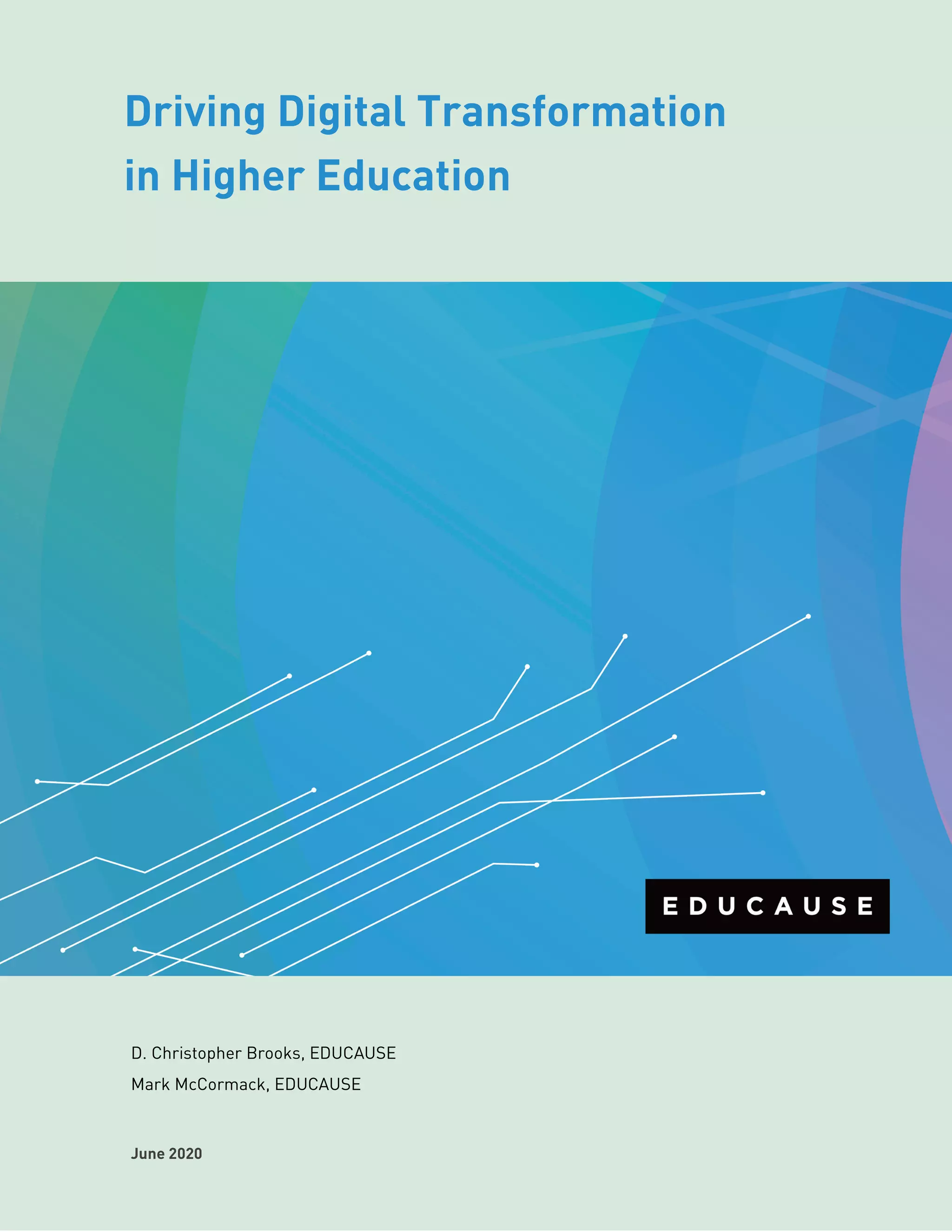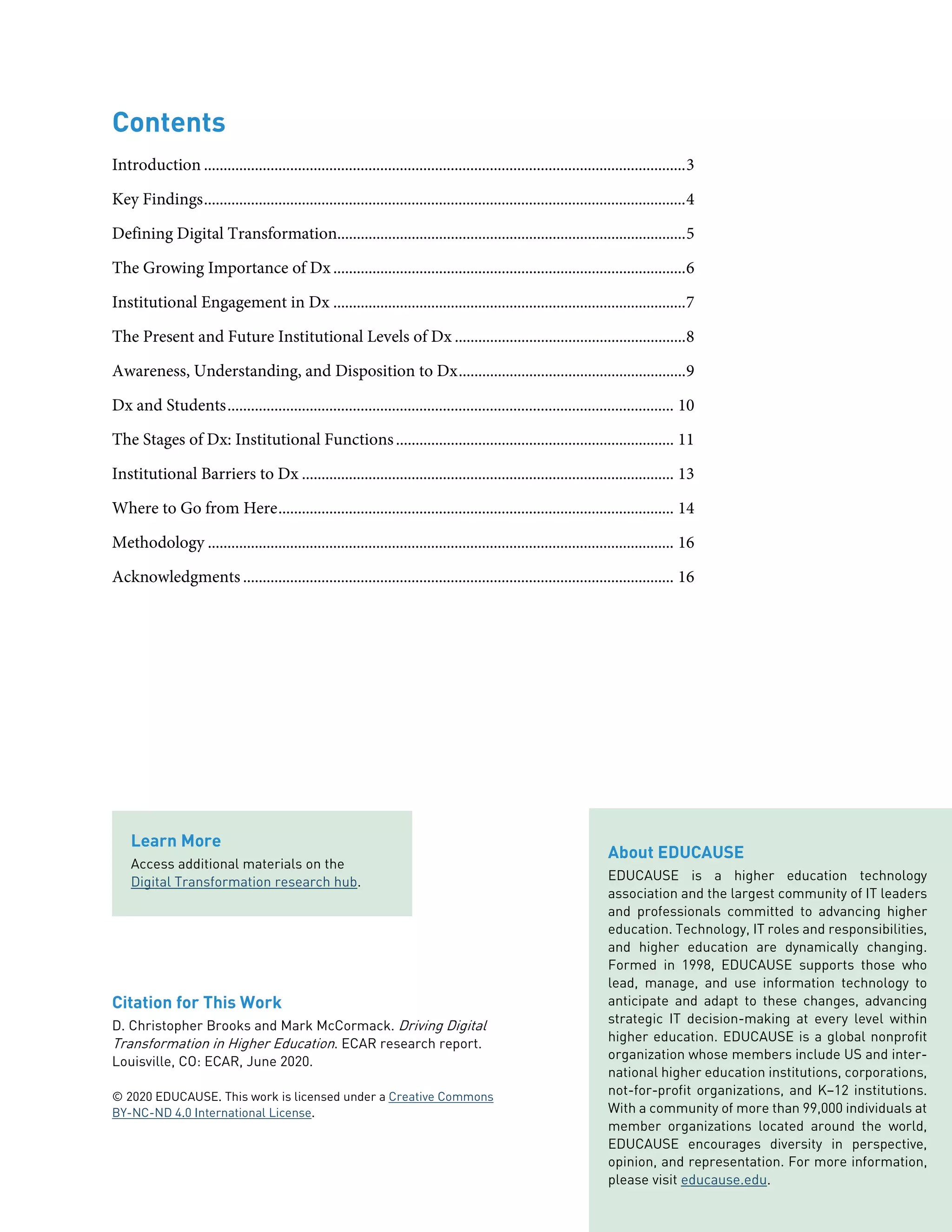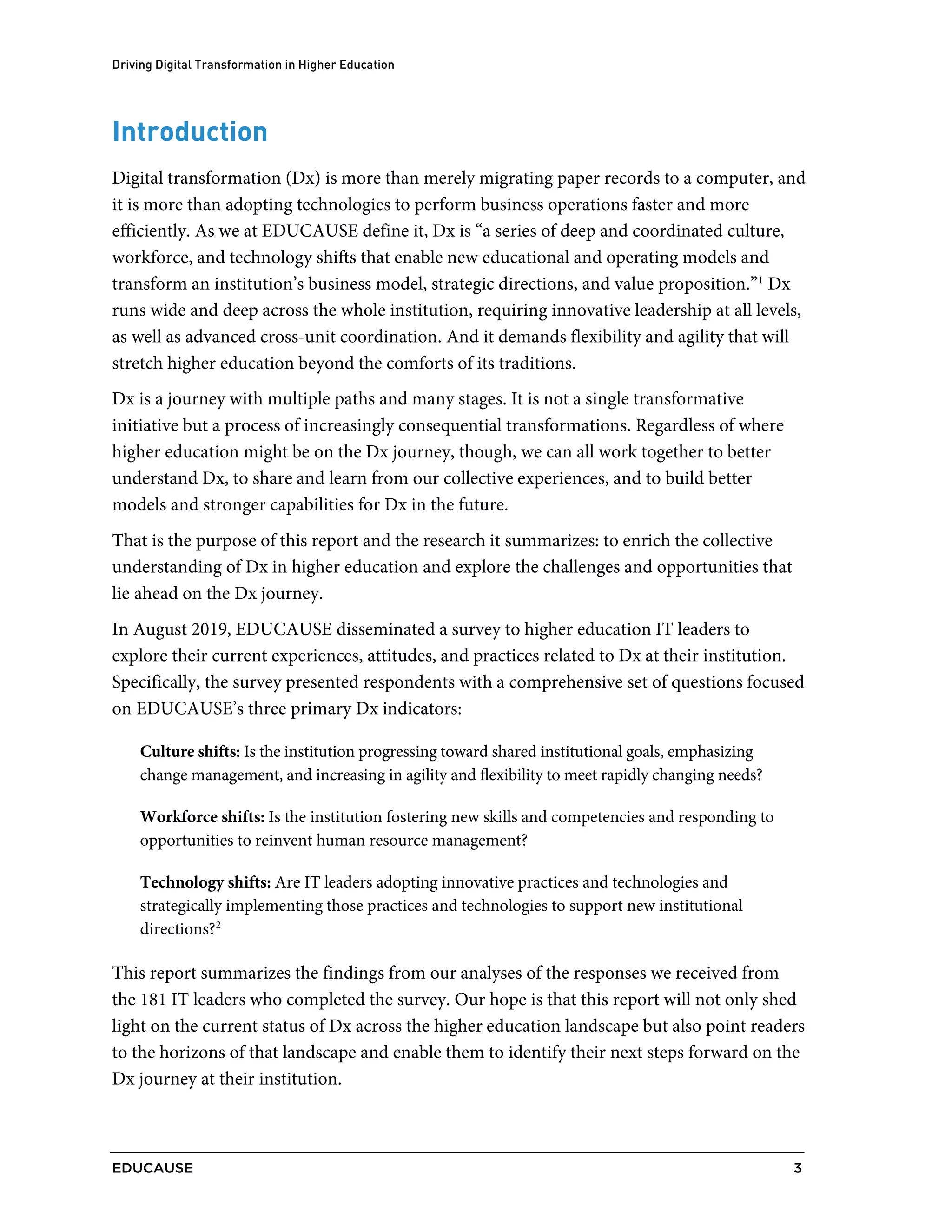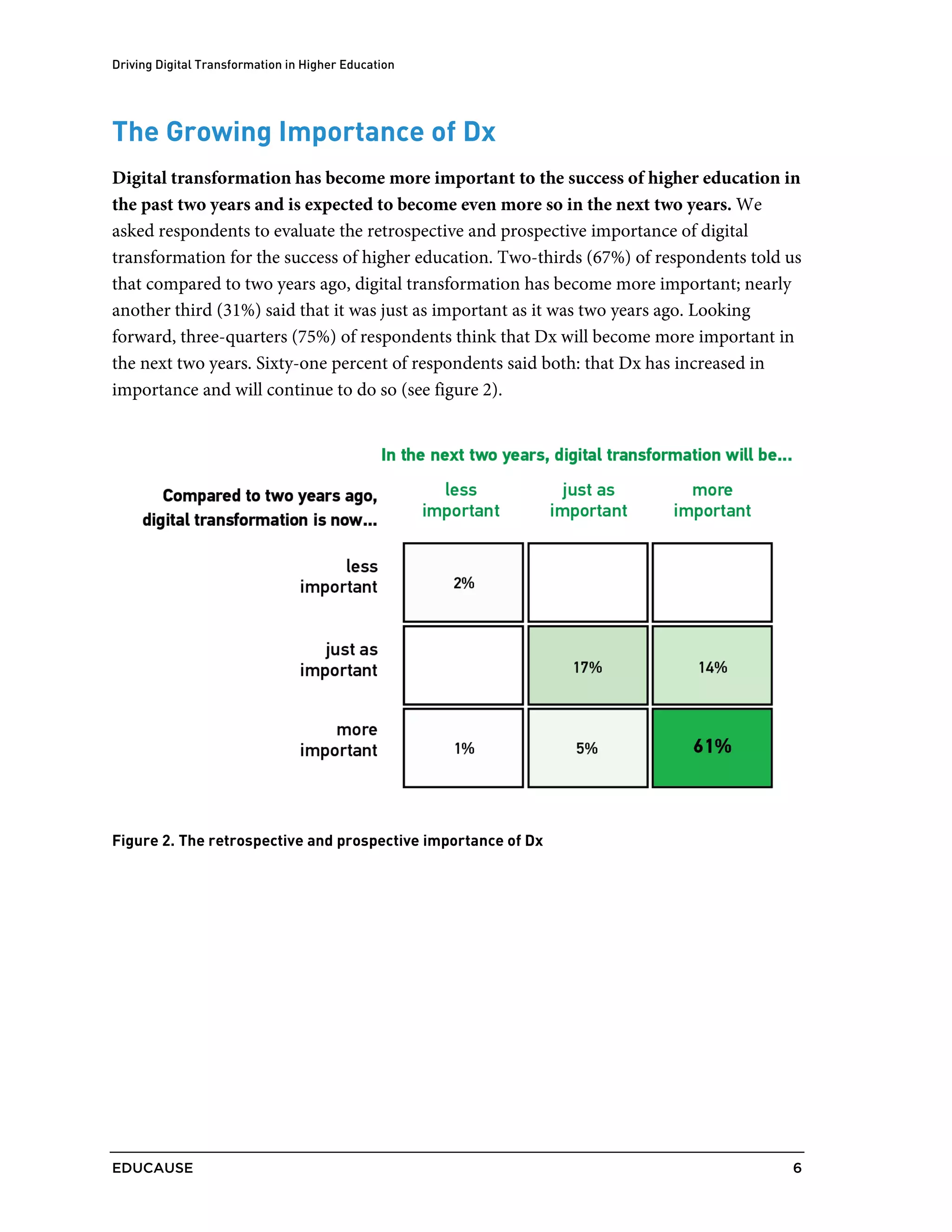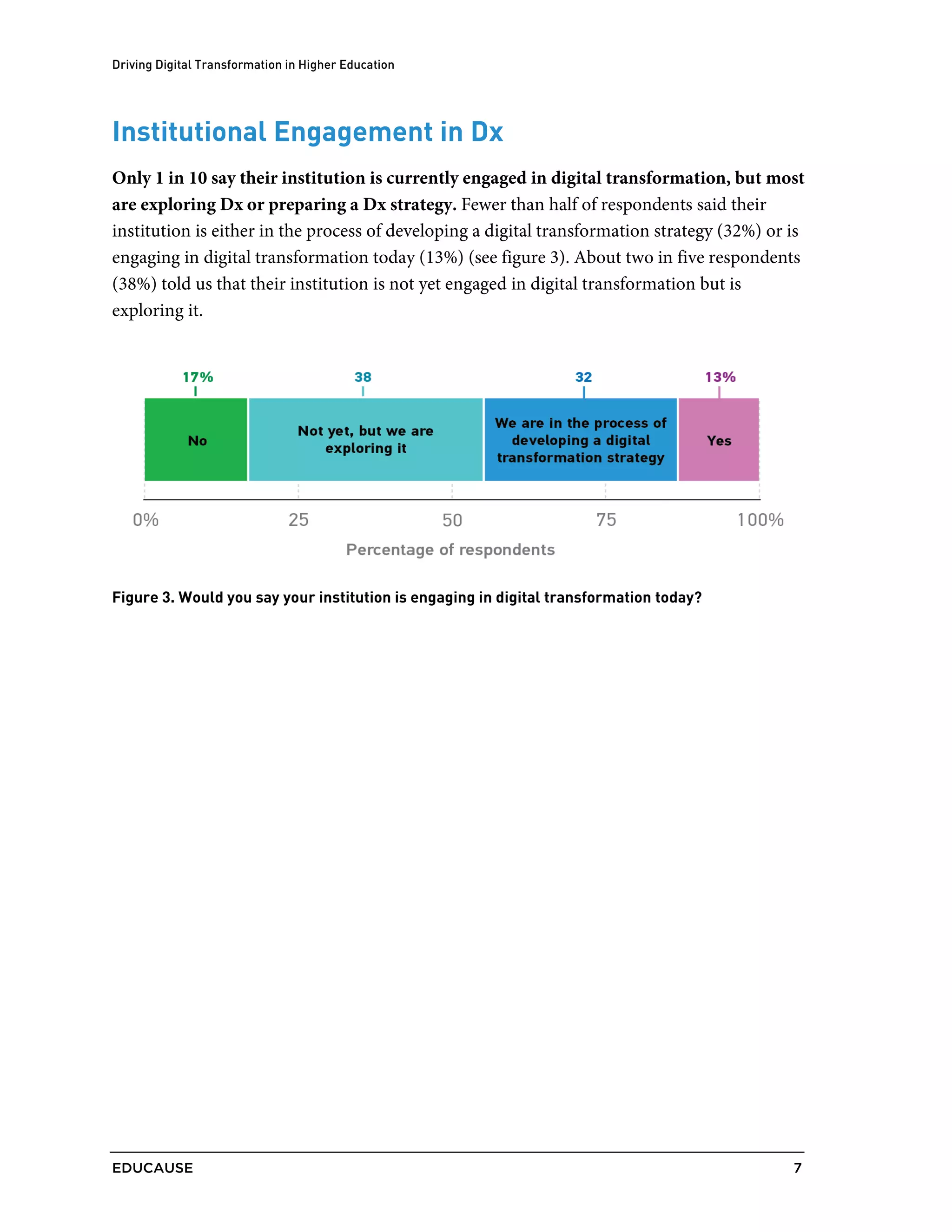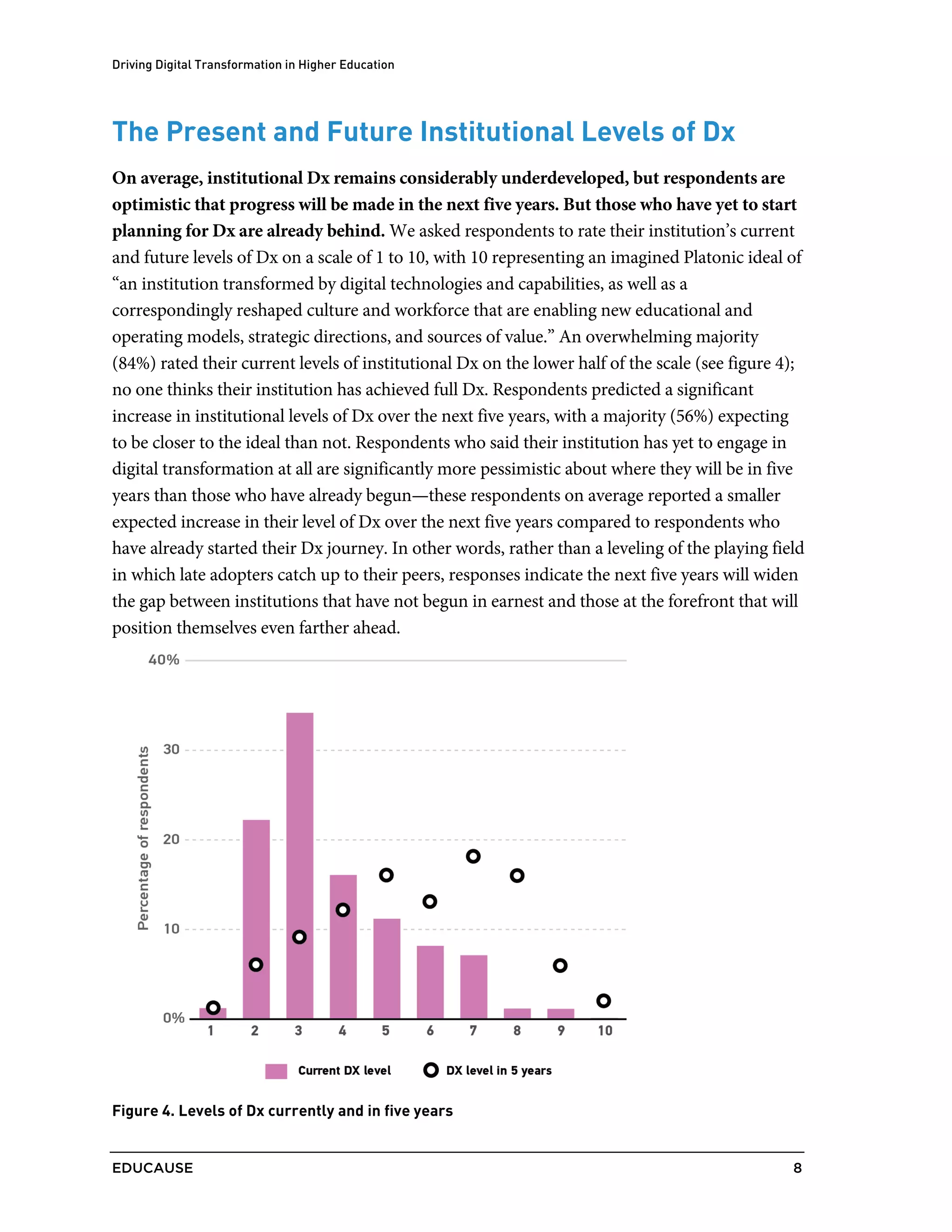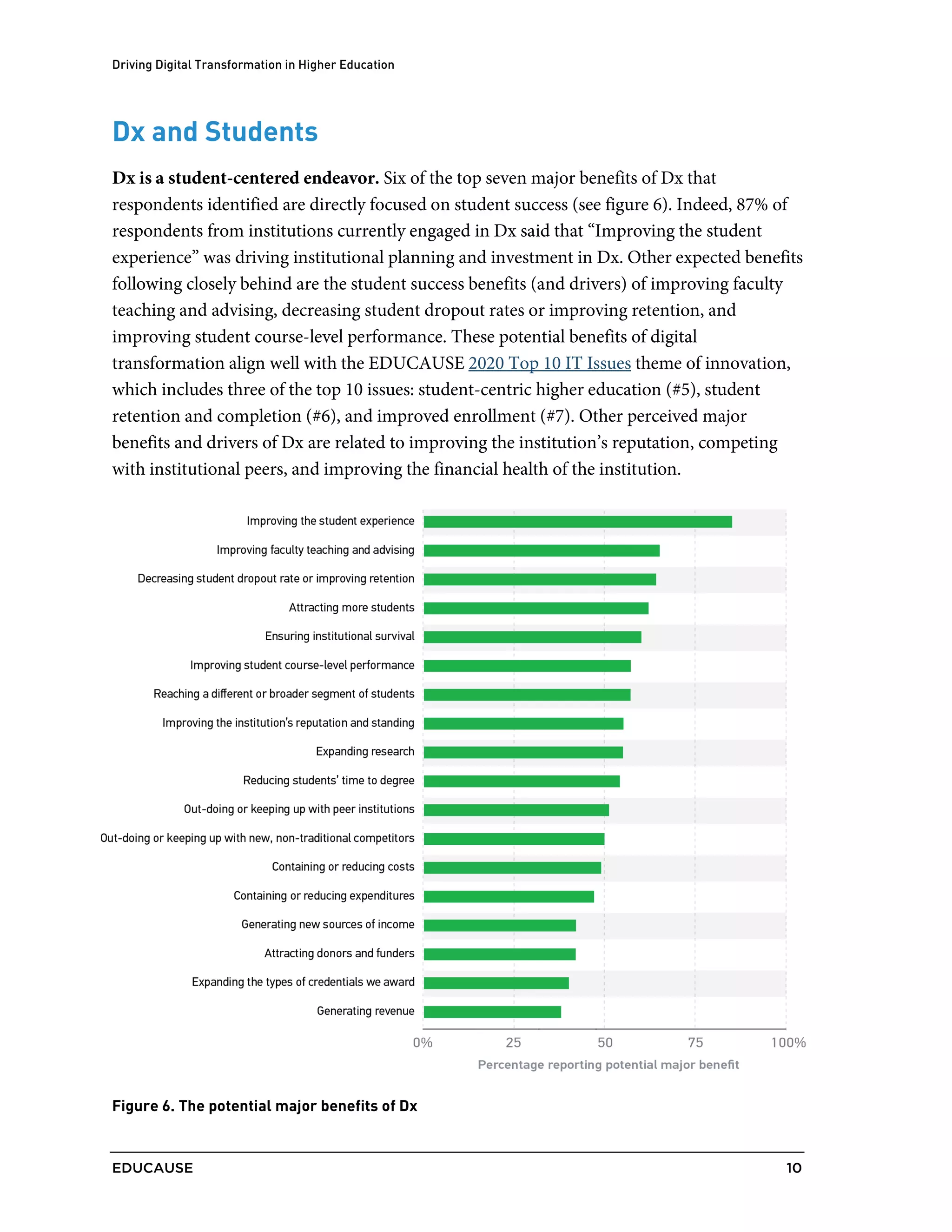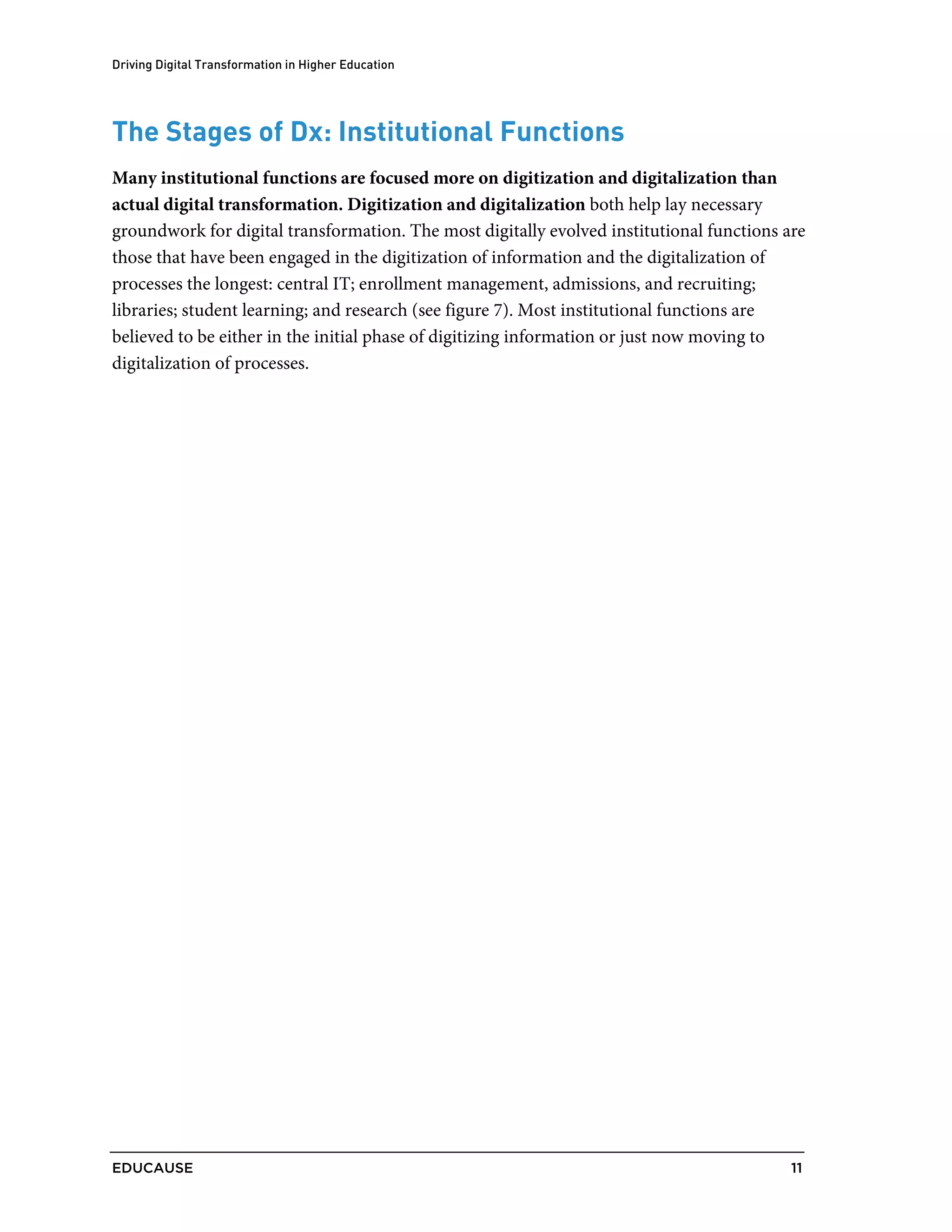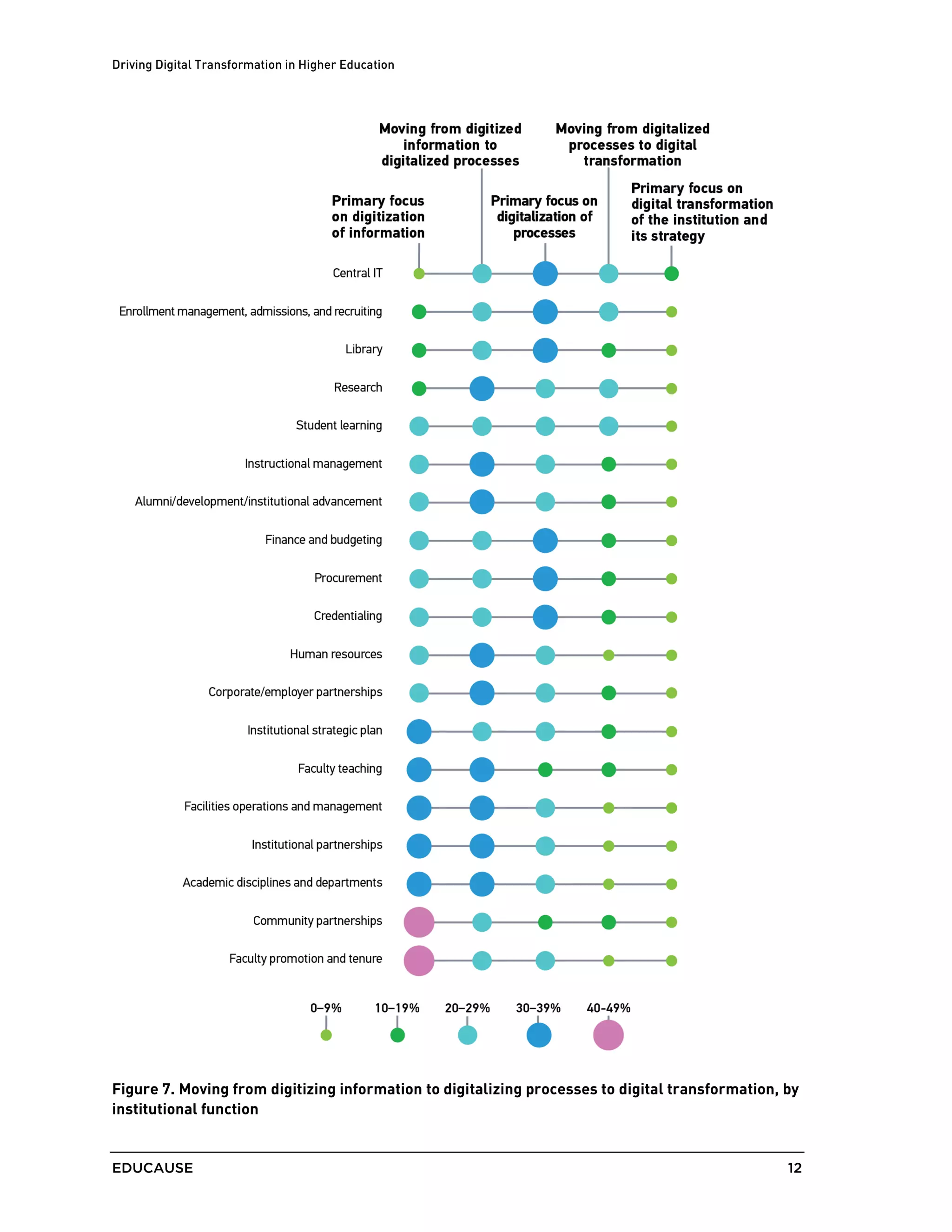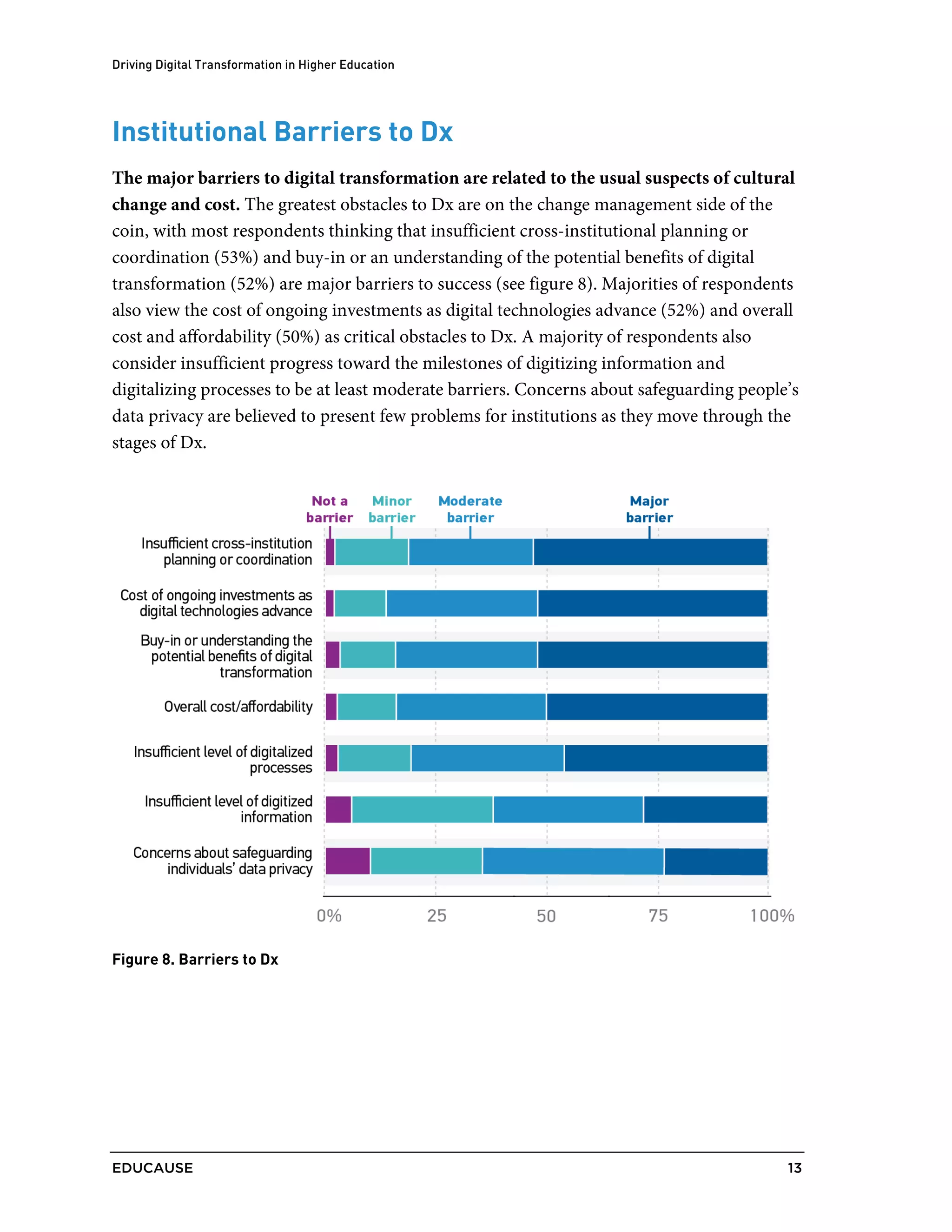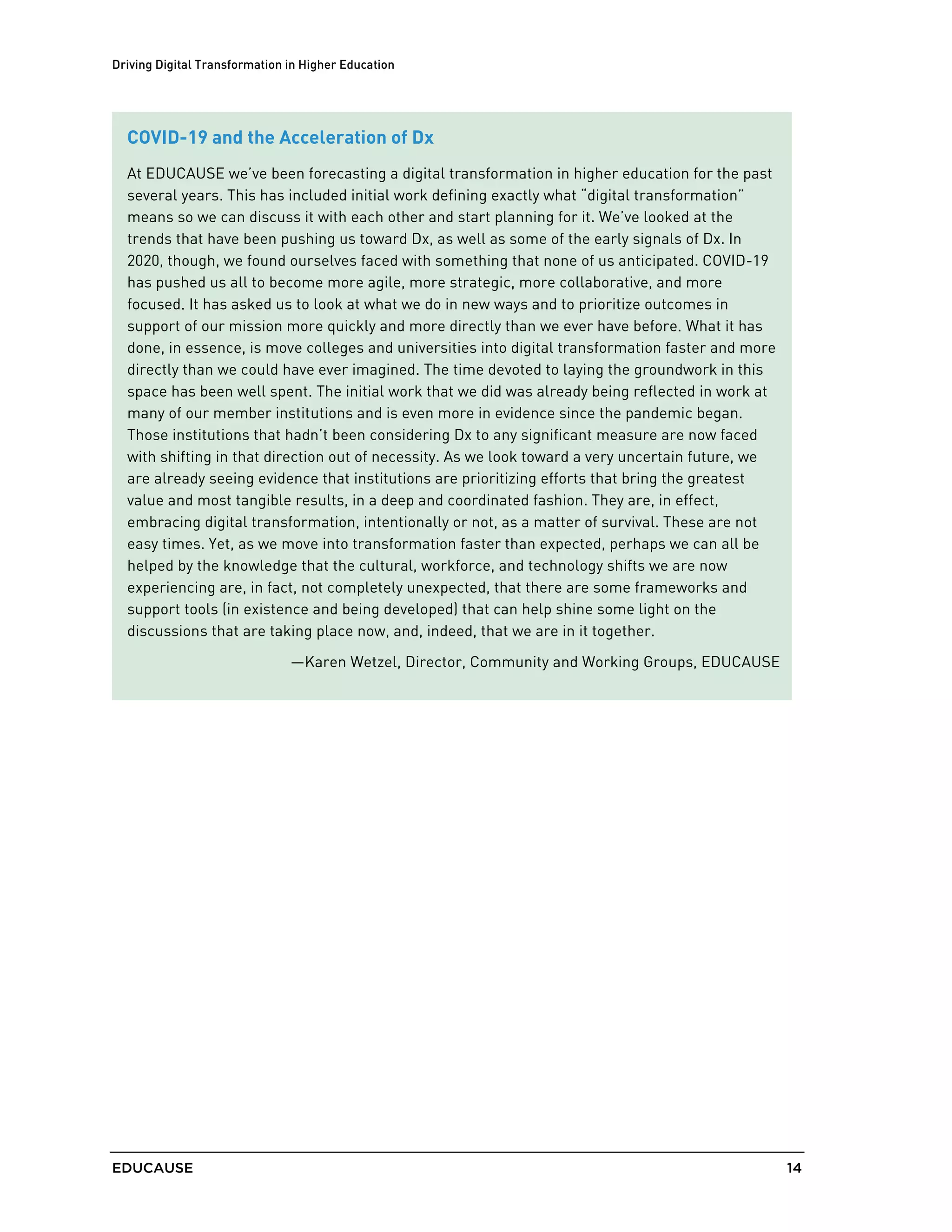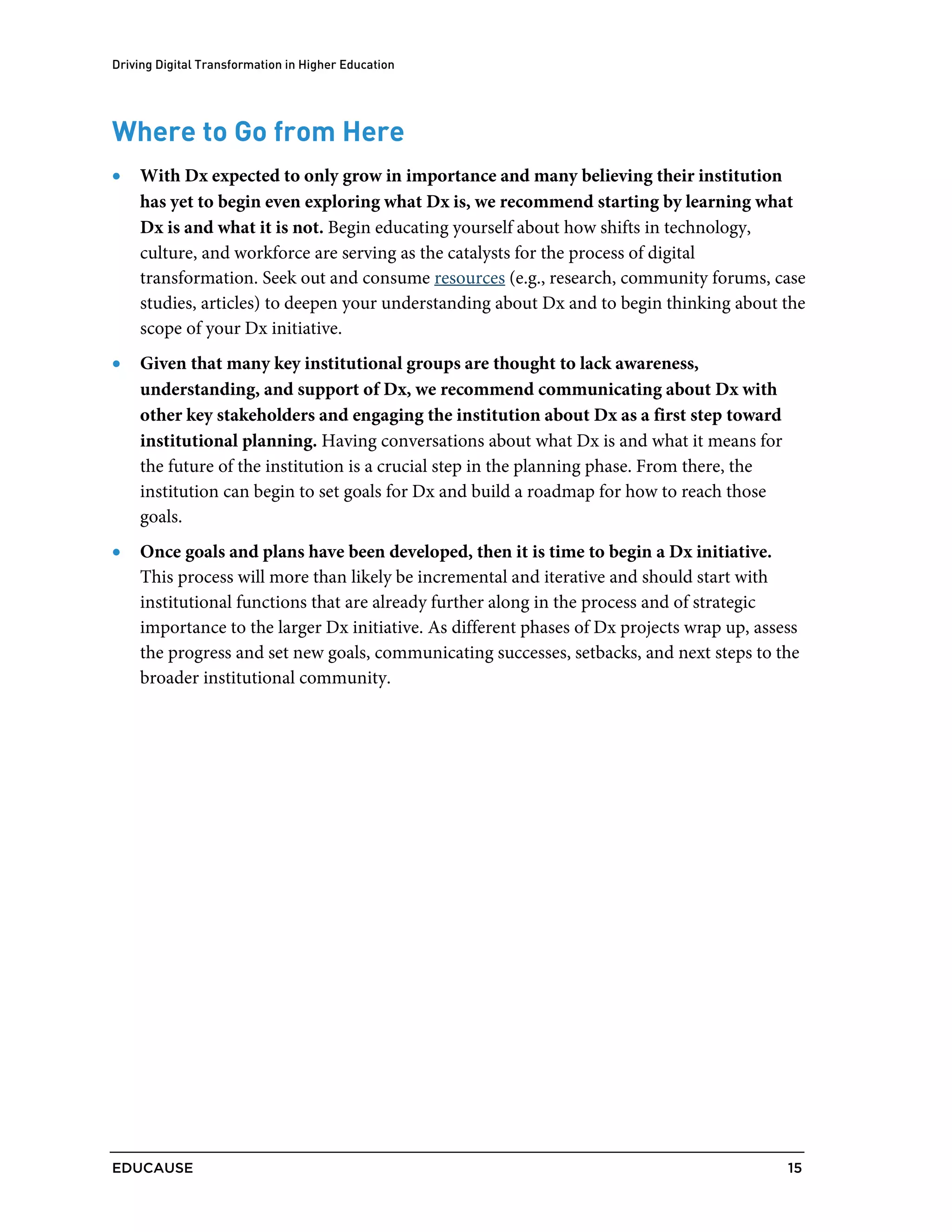The report by Educause presents findings on the current state and importance of digital transformation (dx) in higher education, emphasizing the need for cultural, workforce, and technology shifts. Many institutions are either not engaged or just starting to explore dx, although optimism about progress in the next five years is prevalent. Key barriers include cultural resistance and costs, while the benefits of dx, particularly in enhancing student experiences and institutional competitiveness, drive the conversation forward.
